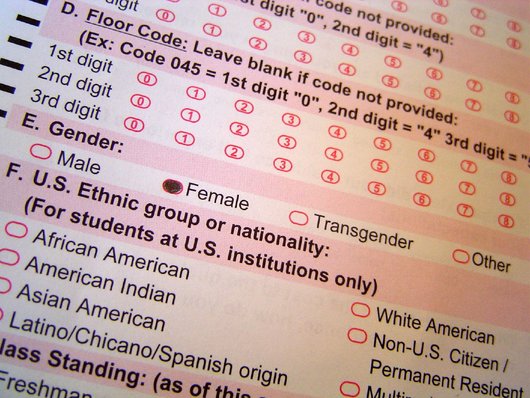Transparency
Information concerning the surveys and all data will be made public on these pages and shall be available for as long as possble.
We will try to use open-source file-formats whenever possible, so data can be accessed and processed easily. Feel free to distribute the results or use the collected data for own presentations. If you feel like sharing your conclusions, just send us an email, we will link to your results here.
Technology
EvaSys is a platform used by the University of Ulm for surveys of all kinds. With this system, most of the lecture evaluations are implemented. However, as opposed to those lecture evaluations, we will not use paper questionnaires and scan those afterwards, but will use online questionnaires to be used with your web browser.
EvaSys offers the possibility to create online surveys with authentication codes (TAN = transaction authentication number). Every student will be provided with a unique TAN, which can be used to answer the survey once. We will create about 8000 TANs (corresponding to the number of enrolled students) and submit this list to the kiz, which will send one TAN to each student. This way, we will not see any of your e-Mail addresses and will not be able to match your TAN to your e-Mail address. The kiz will retain a table with the associations between TANs and e-Mail addresses only until a second "reminder" e-Mail has been sent to the "owners" of all TANs that have not been used by that time. For this purpose, the kiz will be provided with a list of hitherto unclaimed TANs by us. After this second mail, the kiz will delete said association table and no one will be bothered by any more mails.
Privacy
Formally and legally, we cannot claim this evaluation to be "anonymous", since both the kiz and the student union are part of the same enterprise (namely the university).
However, we have put great effort in designing the process and choosing the systems in a way making it hard to infer answers to a specific person.
For instance, a mapping between TANs and your e-Mail addresses can only be made within the kiz and only for a certain amount of time (the tables with the associations will be deleted after the reminder e-Mails have been sent). We, the students responsible for the survey, have neither influence on nor access to those tables. We only know the table of TANs created and, after completion of the survey, which answers were given using which TAN, but we do not know the specific e-Mail addresses those TANs were sent to.
Furthermore, the raw data will be reviewed before publishing it. Should for one critical questions less than six persons have chosen the same answer, the data sets related to this answers will be removed from the data before it is published. This is meant to complicate associating answers to persons. Also, answers given as free text will only be published in accumulated form.
Arrangement of Courses
We have arranged courses in groups of approximately same size. Medicine majors are the only and inevitable exception to this.
The number behind the groups represents the number of students in that group; source for this data was the Fallstatistik der Uni Ulm (Studienfachbelegung nach Abschluss und Fachsemester), summer semester 2011.
Currently, this question seems rather irrelevant for our topic. We would nonetheless allow for the opportunity of finding interesting correlations.
- Biologie (Biologie, Biochemie) - 745
- Chemie (Chemie, Wirtschaftschemie) - 549
- Ingenieurwissenschaften (Advanced Materials, Communications Technology, Elektrotechnik, Energy Science and Technology, Informationssystemtechnik, Informationstechnologie) - 619
- Informatik (Informatik, Medieninformatik, Software Engineering) - 800
- Mathematik (Mathematik, Wirtschaftsmathematik) - 961
- Medizin (Medizin, Zahnmedizin) - 2446
- Physik (Physik, Wirtschaftsphysik) - 437
- Wirtschaftswissenschaften (Finance, Wirtschaftswissenschaften) - 730
- others (Advanced Oncology, Mathematische Biometrie, Molekulare Medizin, Pharmazeutische Biotechnologie, Psychologie, Computational Science and Engineering*) - 581
The "others" group consists of smaller courses which we aggregated in order to complicate assumptions about the specific person providing the data. For more information, see Wikipedia's treatise on aggregation within statistics.
* Computational Science and Engineering was not yet included in the data


